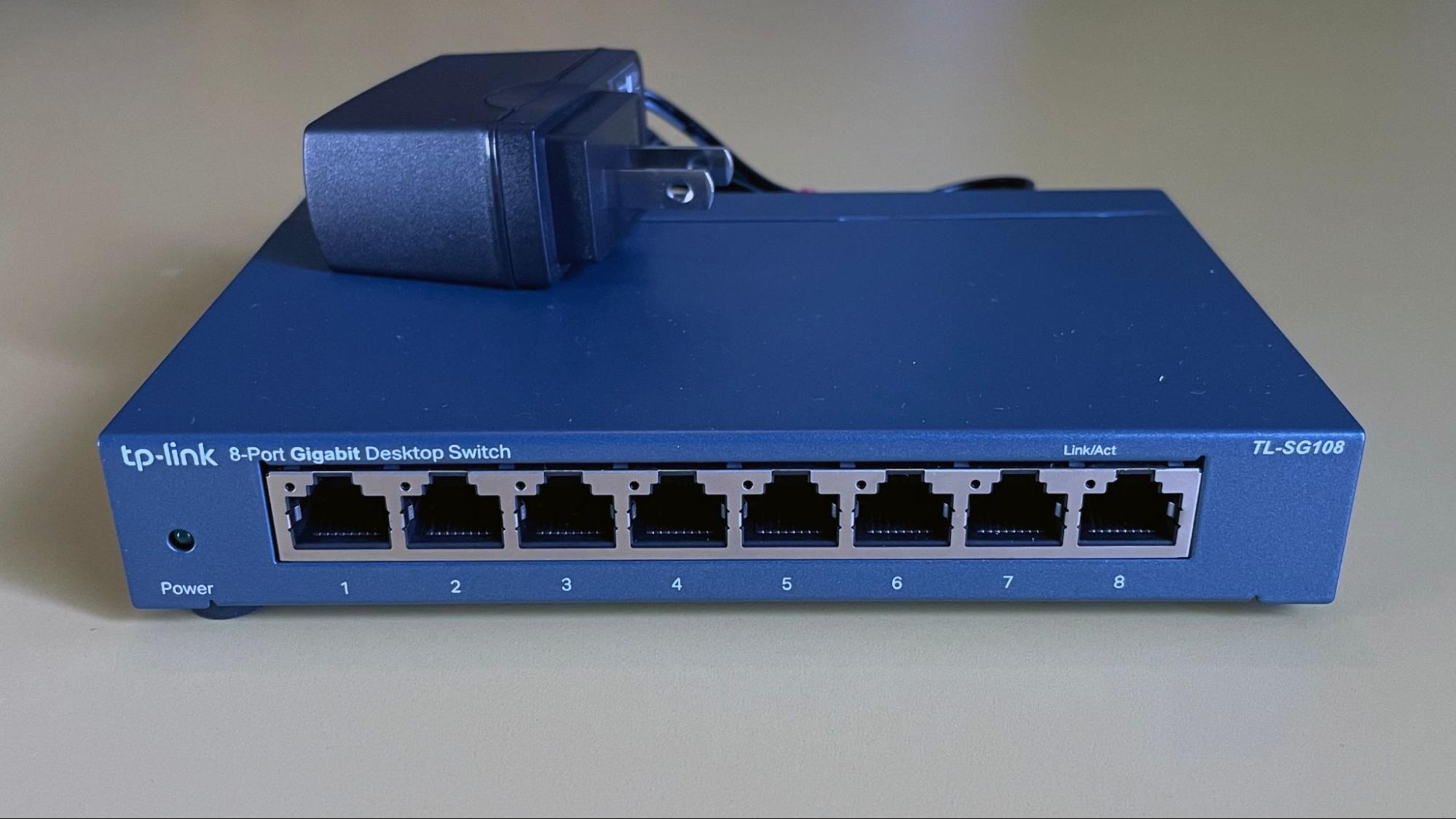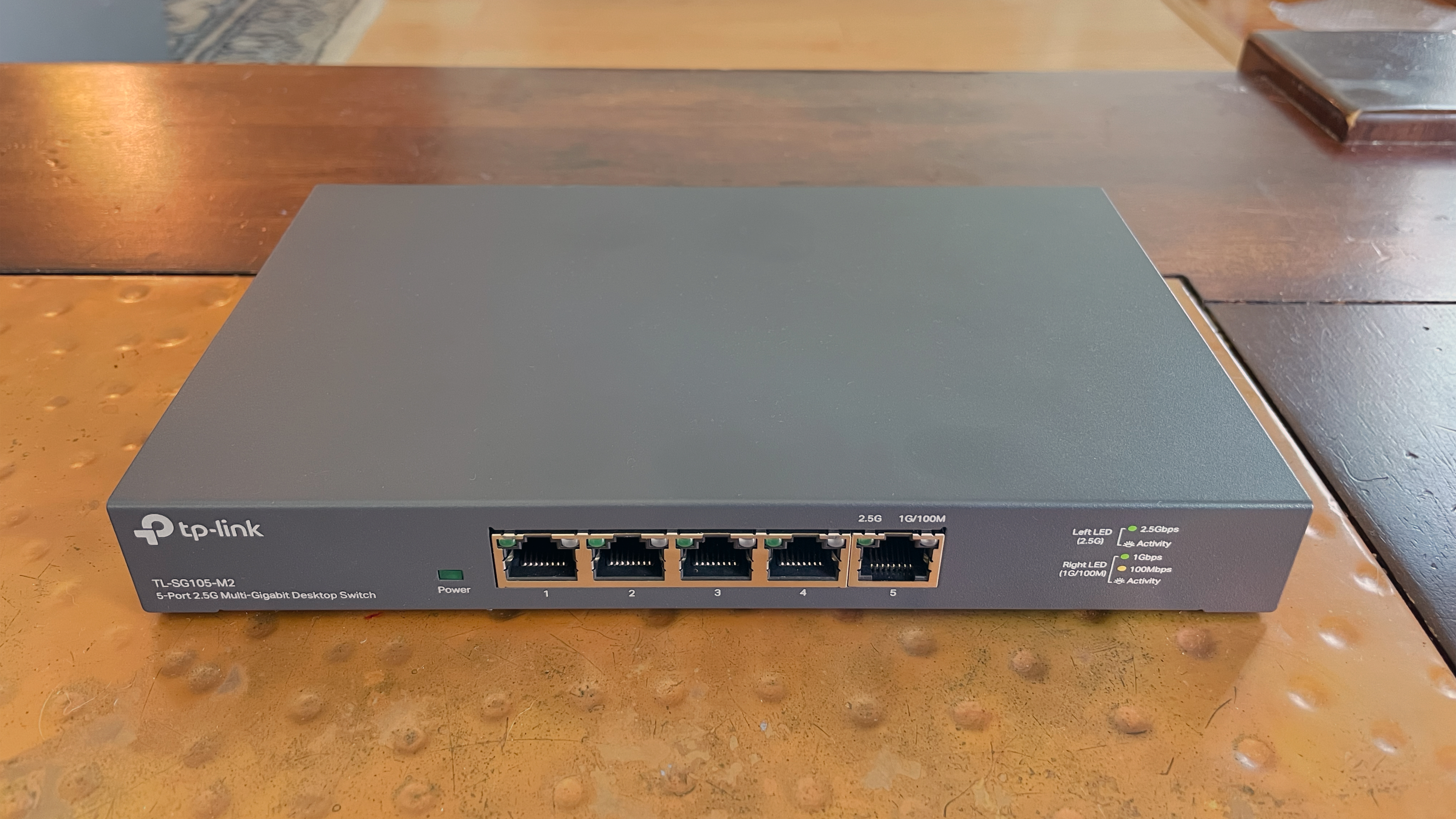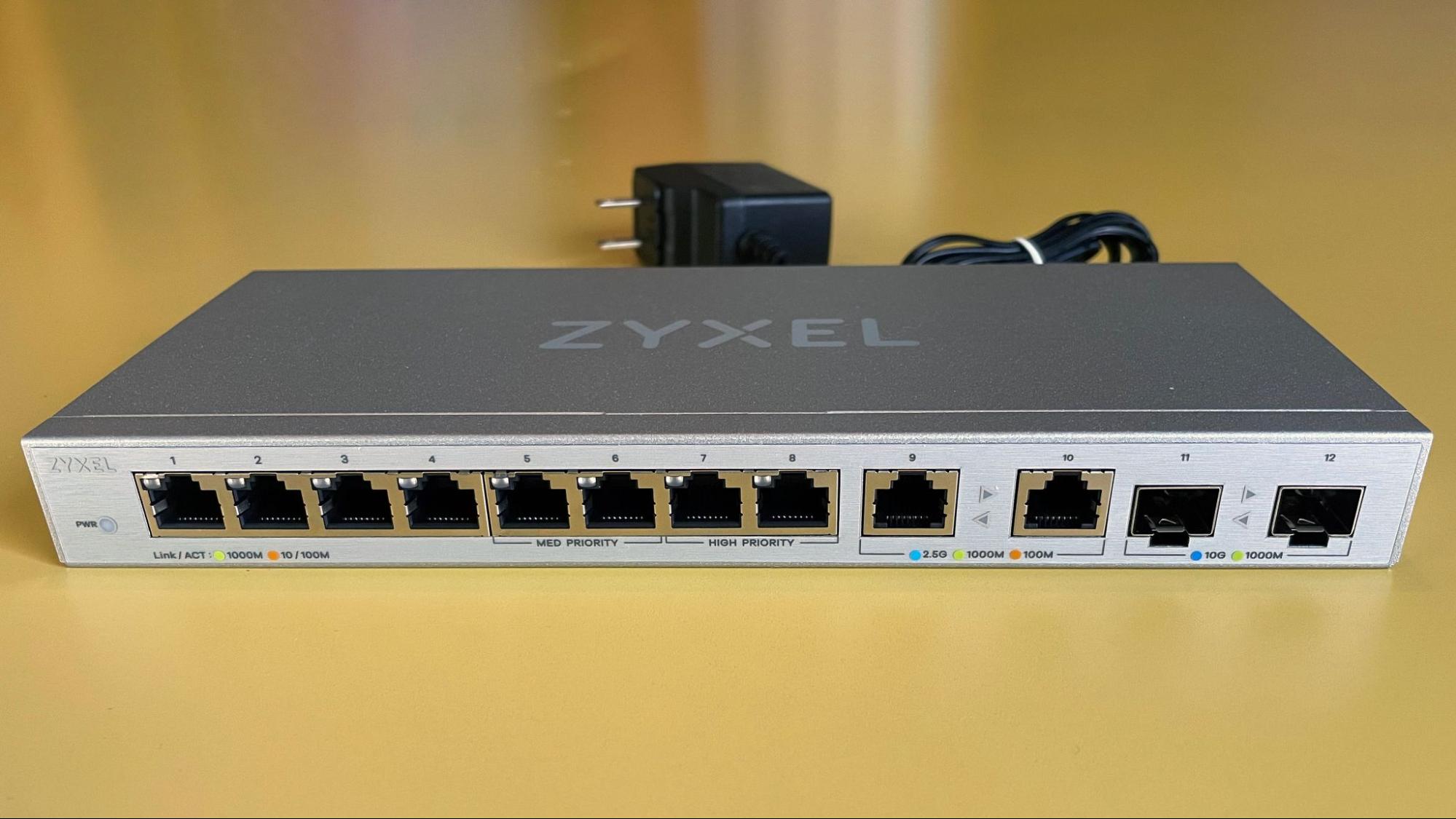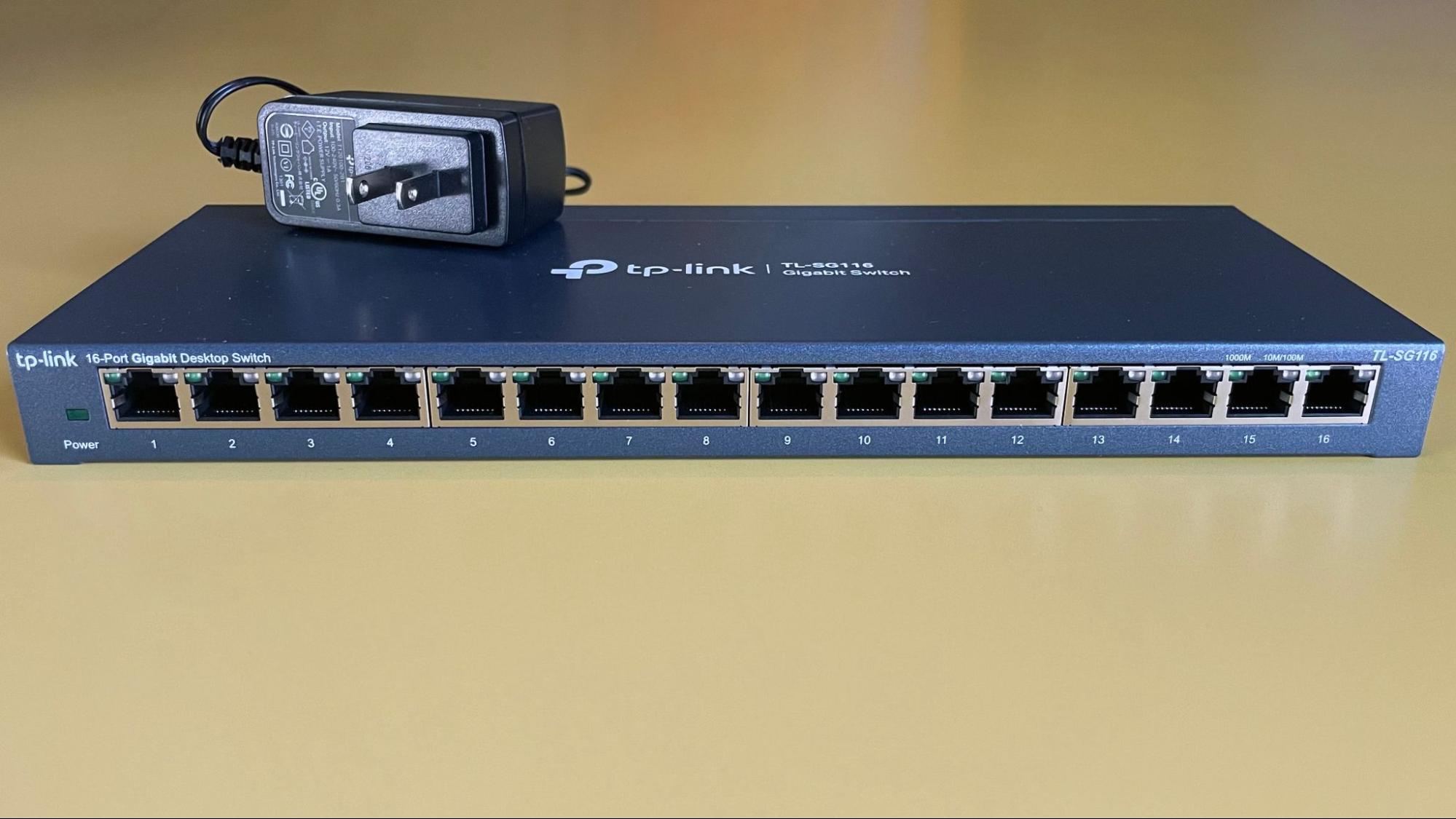Best Network Switches: Add Ports, Speed and Versatility to Your Network
We tested several network switches to help find the right one for your needs and budget.
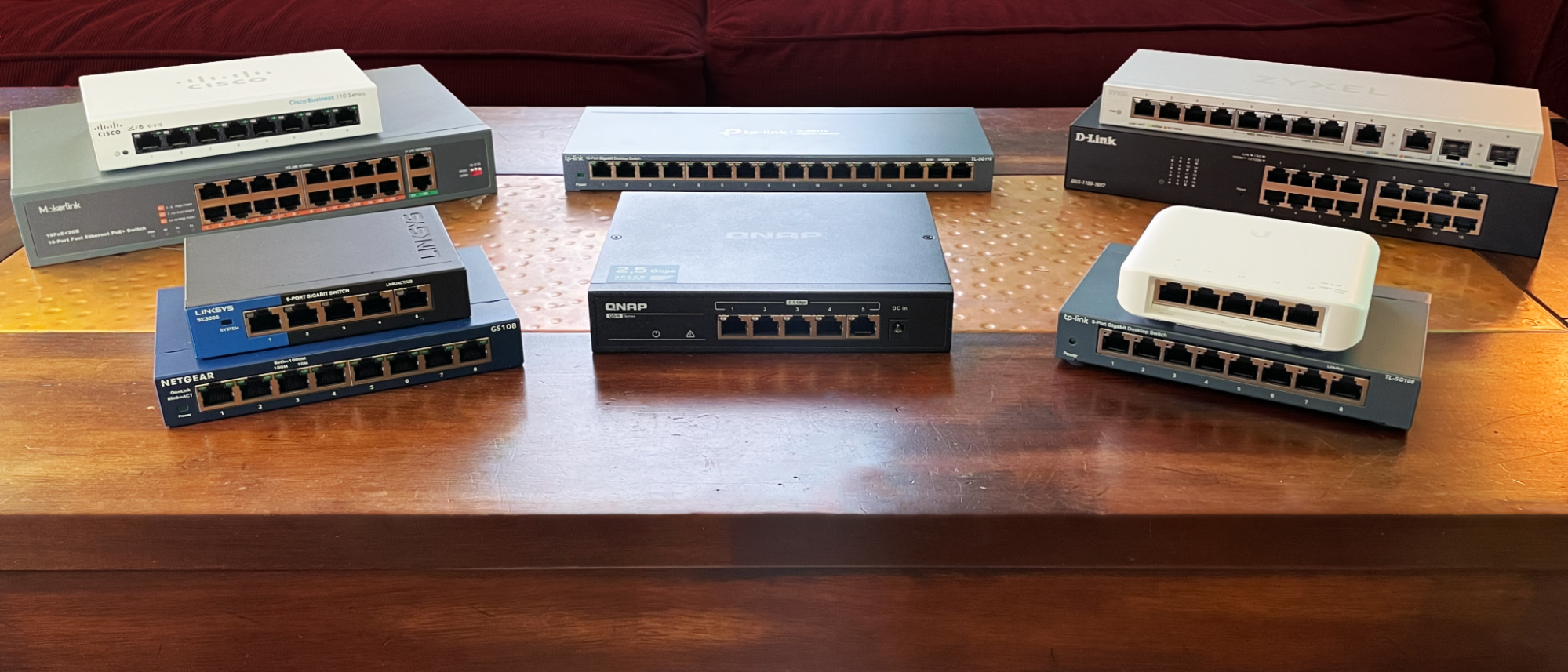
As home networks get more complicated (and packed with more wireless devices) wired networking starts to feel almost dated. Who needs a wired connection from one of the best network switches when you can get Gigabit speeds or better from one of the best gaming routers?
But a wireless connection introduces several variables. Protocol compatibility, interference, signal-obliterating wall materials, or even poorly-designed radios and antennas can slow a speedy gigabit connection to a comparative crawl. For much more on this, see our how-to choose a gaming router feature.
Conversely, a good wired connection can cut out these and other shortcomings of an over-the-air signal, while providing faster speeds and a reliable, stable connection. But with most mainstream routers only offering just four Ethernet ports -- or sometimes fewer -- the best network switches step in to fill the gap, giving you more ports to plug your wired devices into. Not only that, they can also spread out some of the load on your network, freeing your router up to carry out its primary mission of getting internet service to all the wireless devices on your network that need it.
Like the Ethernet hubs that came before them, one of the best network switches can add several ports to your network, letting you plug in more devices to your network than would otherwise be possible using the router's limited number of built-in ports.
What’s more, the best network switch can filter your LAN traffic, moving prioritized packets to the front of the line to keep things like games or 4K HDR streams running smoothly. And most normal networks don’t require more than the simple solution of an unmanaged switch.
We did some hands-on testing with several different (mostly unmanaged) network switches to see which ones are the best for most people. This is by no means an exhaustive list, but these network switches perform well and are solid options for each given use case.
Shopping Tips for Best Network Switches
Why you can trust Tom's Hardware
When looking for the best network switches, consider:
Number of Ports: You can get anywhere from four all the way up to 48 or more Ethernet ports. Some also have USB ports.
Managed or Unmanaged: If you just need to get wired internet access to a few devices, then you’ll want an unmanaged network switch, which we recommend for most users. This doesn’t mean the switch has no features -- unmanaged switches can often do plenty of fancy things, from traffic prioritizing QoS to loop detection.
Managed network switches are more secure and can monitor traffic for troubleshooting purposes or separate chunks of your network into their own virtual local area networks, or VLAN. If going this route, you’ll also want to make sure your router is compatible with VLANs -- a non-bridged setup using Amazon’s eero mesh routers, for instance, makes VLANs unusable.
Power Needs: Most won't need it, but certain devices can get power over Ethernet if your switch supports it.
Network Speed: Gigabit Ethernet is the minimum speed, but you should consider going with 2.5 GbE or higher, even if you don't need it right now, because future devices may benefit.
Best Network Switches You Can Buy Today
1. TP-Link TL-SG108 (Unmanaged)
Our expert review:
Specifications
Reasons to buy
Reasons to avoid
When it comes to 8-port network switches for the home or small office network, it’s hard to beat the TP-Link TL-SG108. It’s compact, has a fanless metal enclosure, plus dimmer-and-less-distracting LEDs than some of its competitors (Don’t worry; there are still two per port, each informative based on color and/or blinking pattern). The TL-SG108 also features traffic-prioritizing QoS, full duplex flow control, auto-negotiating ports for choosing transfer speed up to a gigabit, and simple, plug-and-play setup. This best network switch performed at rough parity with other 8-port switches we tested and ran cool.
The one notable omission from this network switch is loop detection, which prevents your network being slowed to a crawl or disabled entirely by looped network traffic. This can be a very important troubleshooting tool in a complicated network, with visual indicators on a switch that tell you which Ethernet ports to investigate for issues.
If loop detection is a requirement, we recommend either the ProSAFE Netgear GS108 or the Cisco CBS110-8T-D. However, each of those switches, at $40 and $68 respectively, is also significantly more expensive than the less-than-$20 TP-Link. And we do not feel that, for most people, loop detection justifies the extra cost.
Lastly, the TP-Link features a nice limited lifetime warranty, providing a nice peace-of-mind that you wouldn’t get from, say, the similarly-inexpensive Netgear GS308, which only has a 2-year warranty. On the whole, even if you only need 5 extra ports, we recommend this switch for its price, feature set, and build quality to expand the wired capability of your network now and in the future.
2. TP-Link TL-SG105-M2
Our expert review:
Specifications
Reasons to buy
Reasons to avoid
After what seems like an eternity, network devices are finally beginning to embrace faster-than-gigabit connections. From routers to modems, computers to NAS, big data pipelines are starting to enter the mainstream. And that’s a good thing, particularly as we now use more data than ever before. It’s even possible to get a 2 Gbps connection now if you live in one of the cities where Google is now offering the service.
Of course, you needn’t have a connection that fast to get use out of one of the recent 2.5 GbE network switches. File transfers, home media servers, and high-capacity, high-bandwidth NAS setups can all stand to benefit from a high-bandwidth switch, and as they come out, we’ll try to put our hands to the latest and greatest to let you know how they fare. That brings us, today, to the TP-Link TL-SG105-M2: a super fast unmanaged 5-port, 2.5 GbE switch that, while bigger than your average 5-port gigabit switches, should still fit into just about anyone’s setup - and budget, for that matter.
Along with its 8-port sibling - the TL-SG108-M2 - the TL-SG105-M2 is low-profile, easy to set up, and features a fanless design and metal enclosure that will keep it as quiet as it is fast. And because it’s a 2.5 GbE switch, you might not need to buy new cabling; as long as you’re already using Cat 5e cabling in your network, you’re good to take advantage of the 802.3bz network protocol, which promises 2.5 GbE or 5 GbE connections over 100 meters of cable. In testing, this bore out, with super fast file transfers that didn’t even blink when we loaded the network down with as much traffic as we could muster. The switch ran a little warm though, topping out at about 115 degrees Fahrenheit.
This switch supplants our previous choice for best 5-port switch, the QNAP QSW 1105-5T, for a few reasons. First, the TP-Link just has a bigger pipe for data, pushing a consistent 2.34 Gbps where the QNAP, in our testing, only barely got over 2 Gbps in real world use. It also has a slightly more space-friendly form factor. And perhaps most importantly, where the QNAP’s warranty ends at 2 years, the TP-Link TL-SG105-M2 falls in the company’s business class of switches, giving it a generous limited lifetime warranty. Lastly, the TL-SG105-M2 sports QoS - a feature typical of most unmanaged switches that is conspicuously absent on the QSW 1105-5T.
If we had to pick a couple things that aren’t ideal about this neat little switch, it would have to be the lack of loop detection, and the fact that the power supply plugs into the side opposite the ports -- of course the latter is entirely personal preference, but it can also complicate installation in some setups. The TP-Link’s list price is $129.99 - although as of the time of this writing, you can actually get it for $109 at Amazon, which is the same price as the QNAP. The TP-Link is the choice either way, but with the current price, it’s a no-brainer.
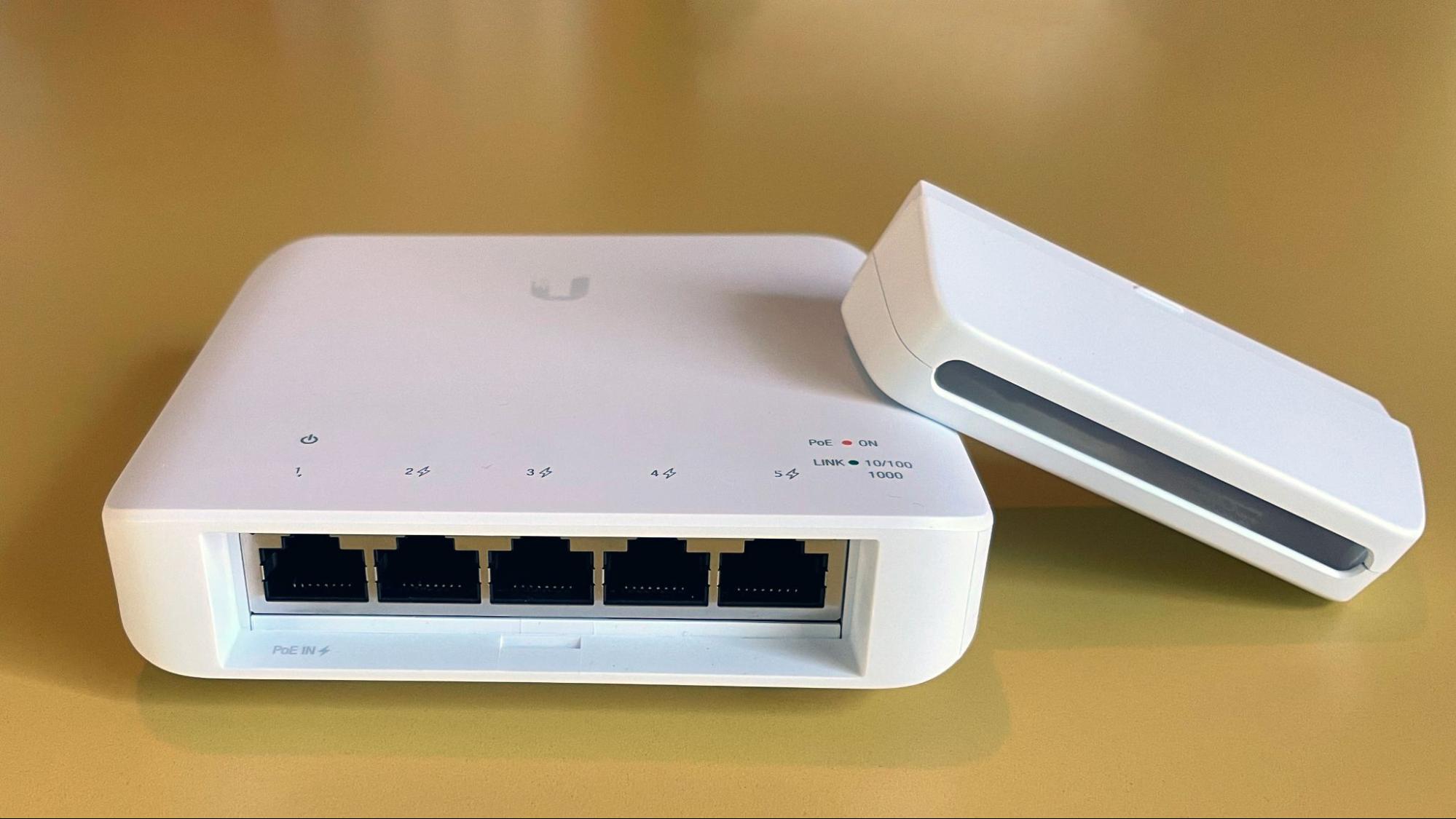
3. Ubiquiti Unifi USW-Flex
Our expert review:
Specifications
Reasons to buy
Reasons to avoid
This is a complicated recommendation. Recent news concerning a privacy breach at Ubiquiti notwithstanding, we believe the Unifi USW-Flex to be the best network switch for anyone looking to bring PoE to the edge of their network. This affordable, 5-port wonder can supply up to 15.4 watts of power to each of its four output ports. Note the use of “up to” here; once you’ve got all ports occupied, the 46-watt power budget will prevent 15.4 watts going to all four ports at once. So if you are using up all of that power at every port, the fourth port gets reduced priority and lower wattage. The PeE features also only apply provided the Unifi USW-Flex is powered itself by a proper PoE injector. If you’re uncertain which injector to buy, Ubiquiti sells a fairly inexpensive one.
Although it’s a managed switch, the Unifi USW-Flex lacks certain key features like Spanning Tree Protocol, which helps prevent switch loops, or the ability to use SSH for extensive command-line-management (although you can SSH in for some basic functionality like firmware updates), it works well as an edge-of-network device to power things like IP cameras or sensors that you may want to have minimal wiring going to.
Additionally, the USW-Flex is built for outdoor use and comes with multiple mounting options - either magnetic or pole/wall mounts - as well as a hood that can be affixed over the Ethernet ports to help prevent moisture ingress when it rains. As a quick aside, part of this switch’s outdoor-friendly design is its recessed ports, which can be hard to remove an RJ45 connector from, as there isn’t much room for your fingers to squeeze the connector’s release clip.
In testing, we found that, when using the Flex without configuration, it worked about as well as any other in this list: Transfer speeds were solid, and faster than other gigabit switches tested under load. It’s worth noting here, however, that the Ubiquiti does get quite hot, sitting easily over 100 degrees Fahrenheit at idle and getting as warm as 118.7 degrees F with every port in use -- and that’s in a cool room, with plenty of air movement. It’s rated to operate in temperatures up to 149 degrees F (at 25W output - 131F at 46W), but it would still be a good idea to keep it in a shaded area if using outside, as direct summer sun could shorten its lifespan or impact performance.
The USW-Flex comes with other caveats, too. The switch is managed via a browser-based GUI (the same general-purpose interface that is used for all other UniFi gear, which is nice if you have an all-UniFi network, but irritating and confusing if you only have this switch. And though it can function without ever touching its settings, there are some you’ll have to change to access promised capability. For instance, the switch does not default to the 802.3bt protocol that provides for the full 46-watt power budget, so you must change the power source under settings to PoE Injector.
You’ll want to be certain that the device powering it is outputting with the 802.3bt protocol, or you will not be able to get all 46 watts. The final note is applicable to managed switches in general: If setting up and using a virtual LAN, you would do well to first ensure that your router supports VLANs -- Amazon’s eero, for instance, currently does not. In spite of all of this, the convenience of bringing both Gigabit Ethernet and 802.3af PoE power from four ports to anywhere in-or-out of your home for a hundred bucks is quite a weighty item in the “pro” column in our opinion.
4. Zyxel XGS1010-12 (Unmanaged)
Our expert review:
Specifications
Reasons to buy
Reasons to avoid
In between 8-and-16-port switches, you have some funky units like this ZyXel XGS1010-12. It’s billed on the box as a desktop switch with 8 gigabit ports and four bonus ports in the form of two 2.5 GbE and two 10 GbE SFT+ uplink ports. The latter fiber Internet customers would recognize as the data port on a fiber ONT (Optical Network Terminator -- think of it like a Fiber modem for customers without last-mile copper).
Physically, the XGS1010-12 has a solid metal enclosure, a fanless design, an external power supply, with all the ports on one edge while the power supply connects in the back. Each port has two LEDs for power and status, with colors to indicate the speed of connection being provided. It boasts QoS, Auto MDI/MDIX in all ports, and flow control.
The switch did well in testing, putting up numbers slightly better than the QNAP on its 2.5 Gb ports, while its gigabit ports performed very well. Under heavy traffic, we saw no performance loss, which is to be expected given its total bandwidth of 66 Gbps. The ZyXel was the second-hottest of the switches tested, peaking at 100 degrees Fahrenheit under load - which is definitely going to be warm to the touch, but not concerningly so. Just make sure the box has a bit of ventilation.
Though the ZyXel XGS1010-12 will run you $150 when bought at its MSRP, the addition of two 2.5 GbE ports and two 10 GbE SFP+ uplink ports makes this a very good deal relative to similar switches, which typically go for hundreds of dollars and lack this much versatility. If you have a high-speed NAS or need a super-fast connection between a couple of your computers, this switch lets you do that on the cheap, while still serving as a great hub for your other devices.
Lastly, it is somewhat unclear what the warranty terms are for this switch (the included documentation only refers the buyer to the website, where it’s not explicit under which warranty it falls, Standard or Limited Lifetime). But we contacted Zyxel and were able to confirm that while XGS1010-12 falls under the 2-year Standard Warranty, this particular switch is among those that have had their term extended to 5 years. That still isn’t amazing, but it’s better than what you’ll get from many cheap switches.
5. TP-Link TL-SG116
Our expert review:
Specifications
Reasons to buy
Reasons to avoid
TP-Link is once again a best network switch choice here because of its affordability. At $50 it’s not quite as much a deal as the TL-SG108, but finding a lower-cost 16-port unmanaged switch with the kind of reliability, warranty, and proven performance offered by TP-Link would be challenging and perhaps involve some good fortune.
With the TL-SG116, you’ll get the same benefits as the 8-port version: IGMP snooping, flow control, QoS, etc. It also has the same unobtrusive LEDs, metal housing, and fanless construction and limited lifetime warranty. Like its 8-port sibling, however, it lacks loop detection, which may be a bigger issue when you’re the type of user looking for a 16-port switch.
The TL-SG116 performed as well as can be expected in testing, with a small drag in transfer speed under load, but otherwise maintaining at least near-gigabit speeds while testing with iperf and normal file transfers, streaming, and gaming. If you have more complicated network needs, we recommend the D-Link DGS-1100-16V2 Easy Smart Managed Gigabit desktop switch, which features an approachable GUI management interface and a well-rounded feature set for $109.99.
Get Tom's Hardware's best news and in-depth reviews, straight to your inbox.
Wes Davis is a freelance writer for Tom's Hardware. He writes buying guides and features focusing on networking, specifically on NAS, network switches and gaming routers.
-
is39 Not enough attention to managed switches. Not having VLANs nowadays makes switch nearly useless.Reply
Obviously going managed opens large can of worms (smart vs web vs app vs cloud vs fully managed). -
PheckPhul Replyis39 said:Not enough attention to managed switches. Not having VLANs nowadays makes switch nearly useless.
Obviously going managed opens large can of worms (smart vs web vs app vs cloud vs fully managed).
I take issue with your generalization that VLANs are a necessity. This review is broadly targeted, to include SOHO environments. No need for VLANs in the average household. a $20 desktop unmanaged gigabit switch will do most households. Most home users' most bandwidth-intensive use is streaming 4k content, which only uses about 25Mbps.
The greatest issue I take with this 'review' is its lack of any benchmarking or discussion of the aggregate bandwidth the backplanes of these switches can handle. -
wbfox Another "Best Of" list made only with concern as to Amazon.com affiliate link availability. Where is the warning about the lack of warranty when buying Unifi hardware on amazon? Where are the test results? What were the criteria used? The questions go on forever.Reply -
Karmajun Is this the "Best of 5" series? And we trust you sans test results?Reply
What about those of us wanting to upgrade our family's capabilities with increased internet security and improved household bandwidth - 2.5 gbe is nice, but how about future proofing with 10 gbe?
I personally like managed switches, but I also have liked Tom's forums in the past. This is practically click bait. At least you discuss the heating issues of the ones you profiled!
You could go on several other forums and get a complete different list of preferred switches - why isn't this a regular Tom's Hardware complete comparison?
